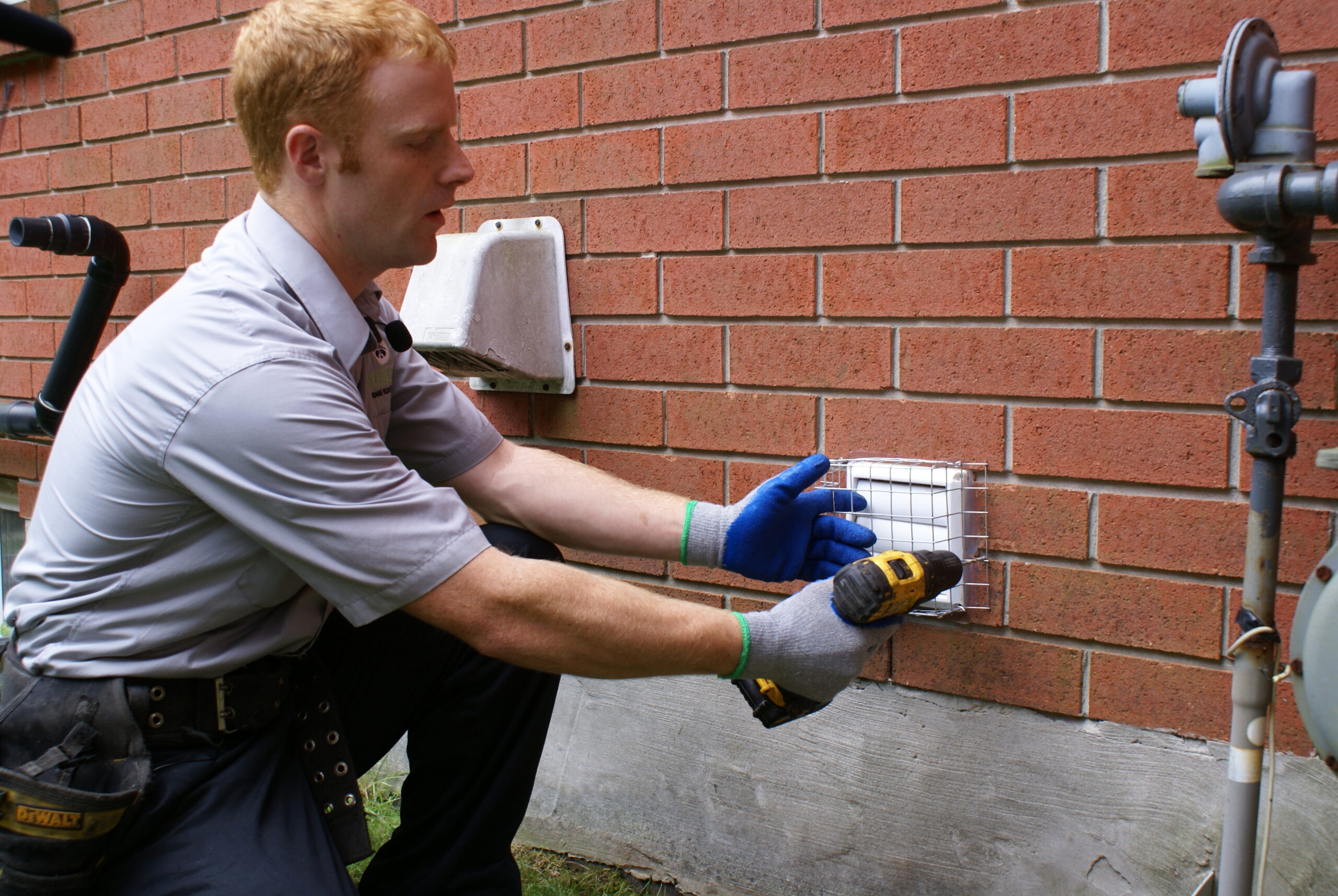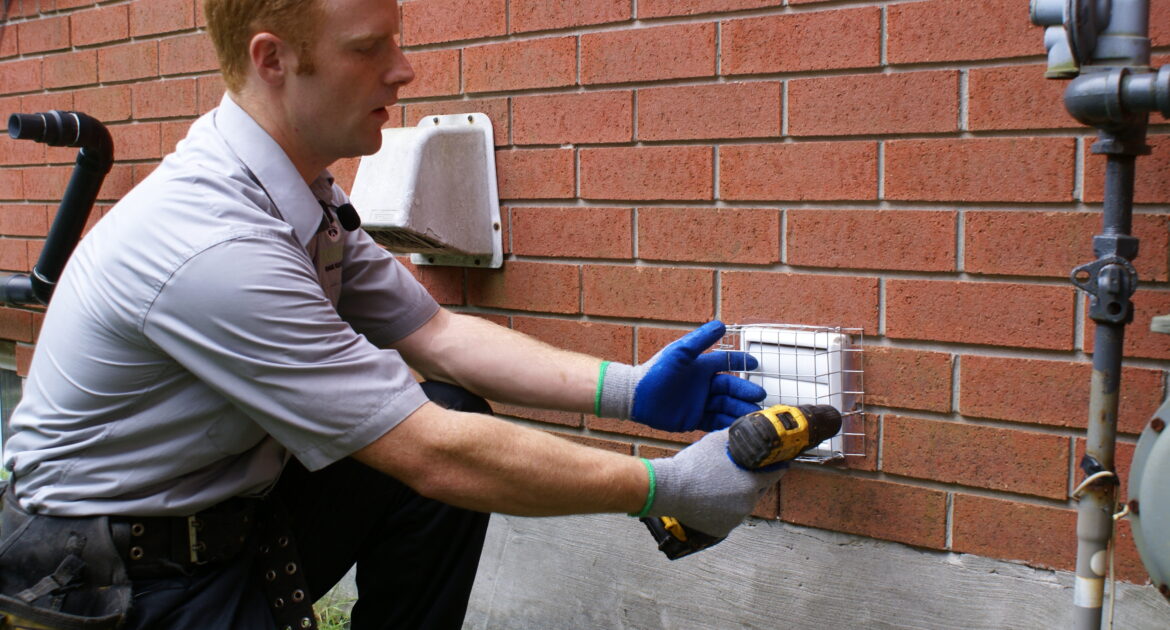Birds nesting in vents can cause a multitude of problems for homeowners, including obstructed airflow, unpleasant odors, and potential health hazards from bird droppings and parasites. If you’re dealing with birds nesting in your vents, it’s essential to take action to remove them safely and effectively. In this blog post, we will explore how our Skedaddle technicians can help homeowners deal with this common issue and prevent it from happening again in the future.
Why Do Birds Nest in the Vent?
Like many other birds, starlings begin preparing nests and laying eggs during spring. They are cavity nesters, and in nature, they would normally make their home inside tree hollows and holes found in rock faces. As part of their adaptation to city life, starlings now find similar nesting conditions in the vent openings found on the sides of houses. These openings exhaust appliances that are found inside the home, including bathroom fans, kitchen fans and dryers.
Although it is less than ideal for homeowners, there are many reasons why birds choose to nest in vents along the attic and walls and in the laundry rooms and bathrooms of a home. Some of these reasons include:
- The warmth provided by vents, especially those used for dryers and in areas surrounded by electronics that give off heat
- The impression of safety brought about by a vent, which is generally closed on most sides and protects the bird from predators coming at them from all angles
- Their size, which is similar to that of many bird species’ nests and therefore provides a space where birds feel they can maintain a nest away from harsh outdoor elements
Safety, warmth and easy access to food and water are some of the main reasons why birds and other animals nest in and around homes. Vents in a house provide all three of these luxuries, so it is easy to see what makes them so enticing to your avian friends. Spring is the most common time of year for birds to lay their eggs, so keep a particularly close eye on your vents during those early warmer months.
How Do They Get In?
Along with understanding why birds choose to nest in vents over other locations, it is important to know how birds get into those small, enclosed nooks in the first place. The purpose of most vents is to provide the air on the inside of a house a release to the outside; therefore, vents also make it possible for small outside creatures to come inside. In addition, older vents can contain holes that make it even easier for birds to find their way into the warm nook of your laundry or bathroom vent.
Once a mating pair of starlings decides to nest and lay eggs inside your house here’s what you can expect:
- Droppings – Starlings aren’t shy about where they leave their droppings. Accumulations of feces inside the home can lead to health concerns, bad odour and permanent staining of building materials.
- Fire Hazards – Inside ductwork, starlings will build large and messy nests of leaves, grass and twigs. Over a season, their nests can grow quite large, even filling entire garbage bags. The nests block airflow and can cause dryers and fan motors to overheat. All of that dry nest material then serves as a dangerous fire accelerant.
- Bird Mites – Most starlings are covered by tiny little bugs called bird mites. The mites live on the baby and the adult starlings and survive on their blood. When the population of mites grows too large or the birds leave the nest they often migrate into the home in search of a new host. Though they cannot survive on humans they will bite the skin causing irritation and discomfort.
Other signs that a bird has taken up residence in your vent include a dryer that suddenly does not work as well as it used to, evidence of small branches, grass and other materials used in nests, and sounds of scratching and whistling inside your home that is reminiscent of a small bird.
To prevent these things from happening in your home, Skedaddle Humane Wildlife Control suggests removing birds from your house at the first sign of infestation. Our technicians will remove the birds, clean the vent and secure it against re-entry. Any babies inside who aren’t ready to fly are placed inside a jog that is positioned next to the vent so that their parents can continue to feed them until they’re ready to go it alone.
How To Prevent Birds From Nesting in Your Vents?
Nesting is a natural and healthy behaviour for birds, and not one that you can or should try to prevent. However, it is understandable that you want to try to prevent them from coming into your home in the first place to nest and disrupting your home’s functions. After all, nests in vents not only inhibit ventilation in the house but can cause the birds to get stuck in the ventilation system themselves. Some things that you can do to discourage birds from nesting in your vents include:
- Ensuring that there are no holes or tears in your ventilation system, including the tubes leading to the vents
- Cleaning the areas around the vents so that there is no food or debris around that a bird could use to build a nest
- Placing a cover over your vents
Preventing avian creatures from building a nest and laying eggs is usually easier than extracting them and their babies later on.
Need To Know How To Get Rid of a Bird’s Nest?
If all else fails and a bird makes your vent their home, you should contact a professional service such as Skedaddle Humane Wildlife Control for gentle and careful bird removal, including any babies and nests on your property. Another benefit of hiring professionals for bird removal is their ability to properly clean bird droppings, which can be dangerous to human health and detrimental to building materials.





